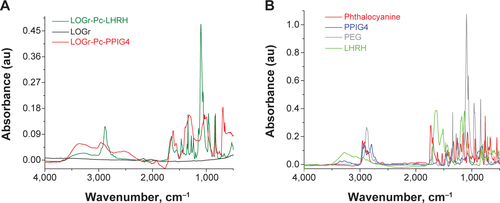Figures & data
Figure 1 Schematic illustration of the synthetic procedure for the multifunctional nanoplatform (LOGr-Pc-LHRH).
Notes: (A) Encapsulation of Pc into PPIG4. (B) Conjugation of LOGr nanosheets with the Pc-loaded PPIG4, via a nucleophilic ring-opening reaction between the epoxy groups of LOGr and the amine groups of the PPIG4 dendrimer. (C) Modification of the prepared conjugate (Pc-LOGr) with PEG and LHRH peptide.
Abbreviations: LHRH, luteinizing hormone-releasing hormone; LOGr, low-oxygen graphene; Pc, phthalocyanine; PEG, poly(ethylene glycol); PPIG4, polypropylenimine generation 4.
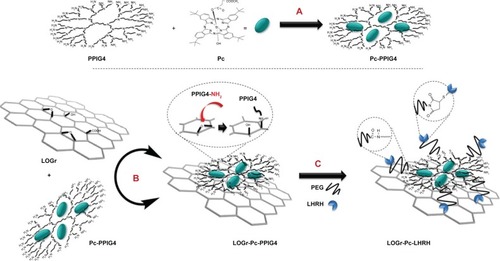
Figure 2 Characterization of LOGr-Pc-LHRH.
Notes: (A) AFM image of LOGr-Pc-LHRH (inset: AFM image of nonmodified LOGr). (B) Stable saturated solutions of LOGr-LHRH, Pc-LHRH, and LOGr-Pc-LHRH, in 1× PBS at pH 7.4 and RPMI 1640 cell culture medium with 10% fetal bovine serum. (C) Absorbance spectra of LOGr-LHRH (black), Pc-LHRH (cyan), and LOGr-Pc-LHRH (dark cyan), in 1× PBS with 10 μg/mL (Pc) and 20 μg/mL LOGr. (D) Fluorescence spectra of LOGr-LHRH (black), Pc-LHRH (cyan), and LOGr-Pc-LHRH (dark cyan), in 1× PBS, λex =660 nm with 10 μg/mL (Pc) and 20 μg/mL LOGr (inset: fluorescence images of LOGr-Pc-LHRH in water, recorded with Li-COR Pearl® Animal Imaging System [LI-COR Biosciences Inc, Lincoln, NE, USA] at 800 nm channel).
Abbreviations: AFM, atomic force microscopy; FBS, fetal bovine serum; LHRH, luteinizing hormone-releasing hormone; LOGr, low-oxygen graphene; PBS, phosphate-buffered saline; Pc, phthalocyanine; RPMI, Roswell Park Memorial Institute.
![Figure 2 Characterization of LOGr-Pc-LHRH.Notes: (A) AFM image of LOGr-Pc-LHRH (inset: AFM image of nonmodified LOGr). (B) Stable saturated solutions of LOGr-LHRH, Pc-LHRH, and LOGr-Pc-LHRH, in 1× PBS at pH 7.4 and RPMI 1640 cell culture medium with 10% fetal bovine serum. (C) Absorbance spectra of LOGr-LHRH (black), Pc-LHRH (cyan), and LOGr-Pc-LHRH (dark cyan), in 1× PBS with 10 μg/mL (Pc) and 20 μg/mL LOGr. (D) Fluorescence spectra of LOGr-LHRH (black), Pc-LHRH (cyan), and LOGr-Pc-LHRH (dark cyan), in 1× PBS, λex =660 nm with 10 μg/mL (Pc) and 20 μg/mL LOGr (inset: fluorescence images of LOGr-Pc-LHRH in water, recorded with Li-COR Pearl® Animal Imaging System [LI-COR Biosciences Inc, Lincoln, NE, USA] at 800 nm channel).Abbreviations: AFM, atomic force microscopy; FBS, fetal bovine serum; LHRH, luteinizing hormone-releasing hormone; LOGr, low-oxygen graphene; PBS, phosphate-buffered saline; Pc, phthalocyanine; RPMI, Roswell Park Memorial Institute.](/cms/asset/e3efee56-0ae2-4ec2-baa8-85fb8a85db87/dijn_a_81097_f0002_c.jpg)
Figure 3 Heat and singlet oxygen generation by LOGr-Pc-LHRH.
Notes: (A) Temperature change upon NIR laser irradiation using 690 nm at 0.95 W/cm2 for LOGr-LHRH, Pc-LHRH, and LOGr-Pc-LHRH in comparison with cell culture medium as control. (B) Singlet oxygen generation by LOGr-LHRH, Pc-LHRH, and LOGr-Pc-LHRH, after irradiation with 690 nm laser diode (0.3 W/cm2) for 5 minutes when compared to DIW and appropriate dark controls. The concentrations of Pc and LOGr in the appropriate formulations were 2 μg/mL and 3.5 μg/mL, respectively.
Abbreviations: DIW, deionized water; LHRH, luteinizing hormone-releasing hormone; LOGr, low-oxygen graphene; NIR, near-infrared; Pc, phthalocyanine; SOSG, Singlet Oxygen Sensor Green®.
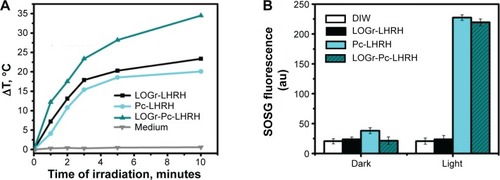
Figure 4 Cellular uptake and dark cytotoxicity of LOGr-Pc-LHRH.
Notes: (A) Flow cytometry analysis of cellular uptake of Pc-LHRH and LOGr-Pc-LHRH nanoplatforms after incubation with the LHRH-positive A2780/AD ovarian cancer cells for 24 hours. (B) Comparative viability of A2780/AD ovarian cancer cells incubated with the different concentrations of unmodified LOGr, LOGr modified with Pc-loaded PPIG4 dendrimer (LOGr-Pc-PPIG4), and LOGr-Pc-PPIG4 modified with PEG and LHRH (LOGr-Pc-LHRH) for 24 hours, under dark conditions.
Abbreviations: a.u, arbitrary units; LHRH, luteinizing hormone-releasing hormone; LOGr, low-oxygen graphene; Pc, phthalocyanine; PEG, poly(ethylene glycol); PPIG4, polypropylenimine generation 4.
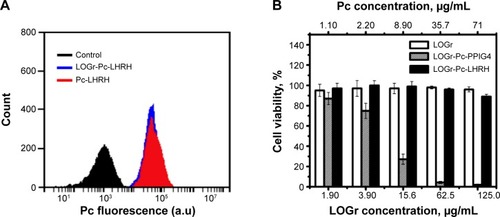
Figure 5 Hemolytic activity and drug release by LOGr-Pc-LHRH.
Notes: (A) Hemolysis of red blood cells after incubation with LOGr-LHRH, Pc-LHRH, and LOGr-Pc-LHRH at various concentrations. (B) The release profiles of Pc from LOGr-Pc-LHRH complex incubated at 37°C, in PBS buffer at pH 7.4, in PBS buffer at pH 5.5 with 10mM reduced GSH, and in 50% human plasma.
Abbreviations: GSH, glutathione; LHRH, luteinizing hormone-releasing hormone; LOGr, low-oxygen graphene; PBS, phosphate-buffered saline; Pc, phthalocyanine.
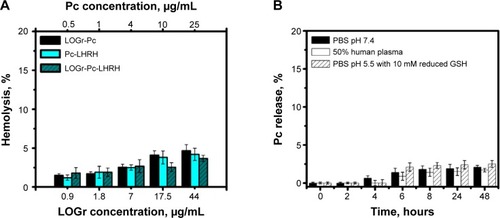
Figure 6 Combinatorial PDT-PTT treatment.
Notes: (A) Combinatorial (PDT-PTT) therapeutic effects of LOGr-Pc-LHRH on A2780/AD cells (10,000) incubated with different Pc (LOGr) concentrations and irradiated for 15 minutes using a 690 nm laser diode (0.3 W/cm2), compared with controls. (B) Combinatorial (PDT-PTT) therapeutic effects of LOGr-Pc-LHRH on A2780/AD cell pellets (2,000,000) irradiated for 10 minutes using a 690 nm laser diode (0.95 W/cm2), compared with controls. (C) Relative intracellular ROS levels in A2780/AD cells incubated with LOGr-Pc-LHRH at Pc concentration of 2 μg/mL (LOGr =3.5 μg/mL) and irradiated for 5 minutes using a 690 nm laser diode (0.3 W/cm2), compared with controls. Untreated cells and cells treated with nanoplatform under dark conditions were used as controls.
Abbreviations: LHRH, luteinizing hormone-releasing hormone; LOGr, low-oxygen graphene; Pc, phthalocyanine; PDT, photodynamic therapy; PTT, photothermal therapy; ROS, reactive oxygen species.
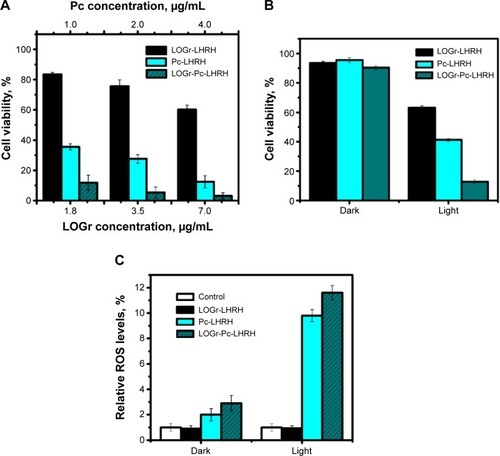
Figure 7 In vivo NIR fluorescence imaging of nude mice bearing A2780/AD tumor after IV injection of saline (A) and LOGr-Pc-LHRH (B) at 12 hours postinjection, using the Li-COR Pearl® Animal Imaging System (LI-COR Biosciences Inc, Lincoln, NE, USA).
Abbreviations: IV, intravenous; LHRH, luteinizing hormone-releasing hormone; LOGr, low-oxygen graphene; NIR, near-infrared; Pc, phthalocyanine.
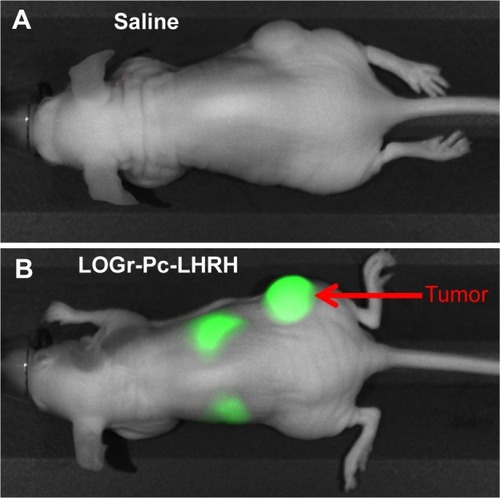
Figure S1 FTIR-ATR characterization of LOGr-Pc-LHRH.
Notes: (A) FTIR-ATR spectra of nonmodified LOGr (black line), LOGr-Pc-PPIG4 (red line), and LOGr-Pc-LHRH (green line). (B) FTIR-ATR spectra of controls: Pc (red line), PPIG4 (blue line), PEG (gray line), and LHRH (green line).
Abbreviations: FTIR-ATR, Fourier transform infrared-attenuated total reflectance; LHRH, luteinizing hormone-releasing hormone; LOGr, low-oxygen graphene; Pc, phthalocyanine; PEG, poly(ethylene glycol); PPIG4, polypropylenimine generation 4.
